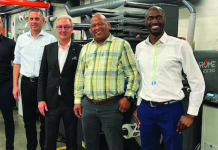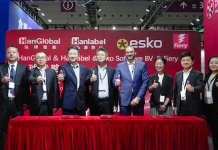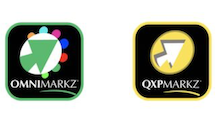According to Laurel Brunner from the Verdigris Project, printers everywhere should be looking more closely at processless plate technology. It cuts out a step in production, reduces chemistry and waste and lets headcount be redeployed.
The uptake of processless printing plates is finally starting to really gain pace, which is great news for the environment. In the lead is Kodak with over 5000 sites using its Sonora plate. The company recently got a massive vote of confidence for Sonora X when Online Printers Group based in Fürth, Germany, committed to the plate on a mammoth scale.
The organisation is one of the largest online print providers in the world, producing print for over one million customers in the United States and Europe, both with offset and digital printing presses. Online Printers Group is a sort of collective with facilities in the UK, Denmark, Poland and Spain. Together these various printing plants boast 189 sheetfed offset printing units for four and eight colour printing. The group also has a wide array of digital presses. Most of the output is B3 format.
Founded as a conventional printing company in 1984, Online Printers Group shifted to becoming an online provider in 2004. Today, Online Printers Group produces over three billion pieces of print annually for business-to-business customers including print shops, resellers and agencies. Offset presses at the company’s three sites in one German town account for over half of these sites’ output and on average require over 3000 printing plates daily. Sonora X, imaged on three Kodak Magnus Q800 platesetters, is now the plate of choice for most of this production.
The Sonora and Magnus Q800 platesetter investments at these facilities are part of Online Printers Group’s commitment to sustainability, as well as its bottom line. The company’s production processes are designed to minimise resource use and cost. This was also the case with digital prepress and computer-to-plate adoption. Efforts to save money make for an environmentally sustainable business model as well as helping the business’s profits. It is amazing that this message still isn’t clear for so many printing companies.
Online Printers Group has optimised everything from online ordering through to shipping, so that the environmental impact and cost of its print production are minimised. All production facilities across five countries are using Sonora plates so this is a huge vote of confidence in the technology.
Early worries about coatings contaminating fountain solutions or blocking filters are no longer valid. Instead, people are focusing on contrast and quality, cost and performance on press. Computer-to-plate has turned a big corner with processless platesetting, helping print’s carbon footprint and production efficiency. Let’s hope the trend to processless continues to accelerate.
This article was produced by the Verdigris Project, an industry initiative intended to raise awareness of print’s positive environmental impact. Verdigris is supported by: Agfa Graphics (www.Agfa.com), Digital Dots (www.digitaldots.org), EFI (www.efi.com), FESPA (www.fespa.com), Fujifilm (www.fujifilm.com/sustainability/), HP (www.hp.com), Kodak (www.Kodak.com/go/sustainability), Practical Publishing (www.practicalpublishing.co.za), Ricoh (www.ricoh.com), Unity Publishing (http://unity-publishing.co.uk) and Xeikon (www.xeikon.com).
THE VERDIGRIS PROJECT
http://verdigrisproject.com/





















